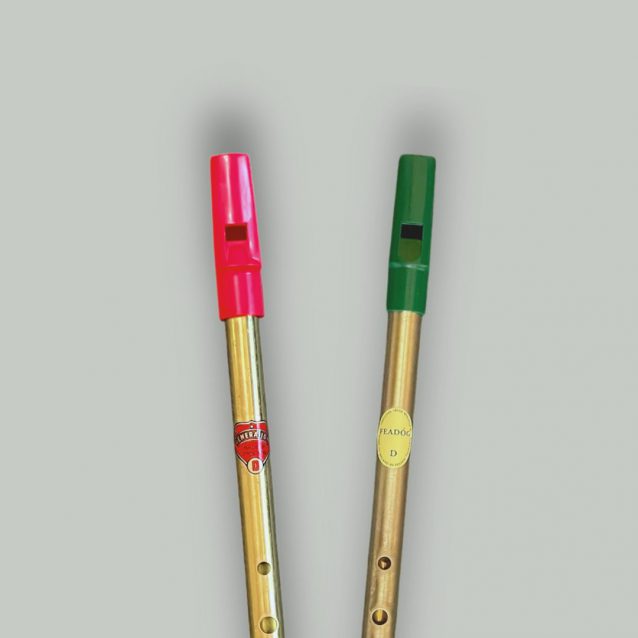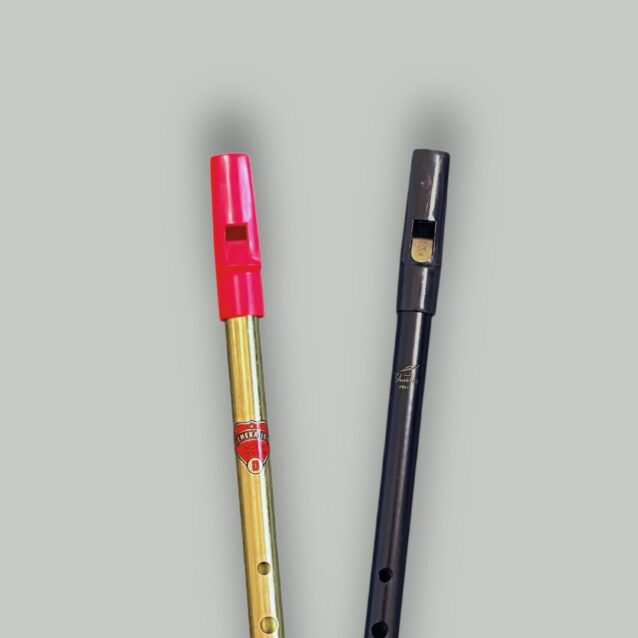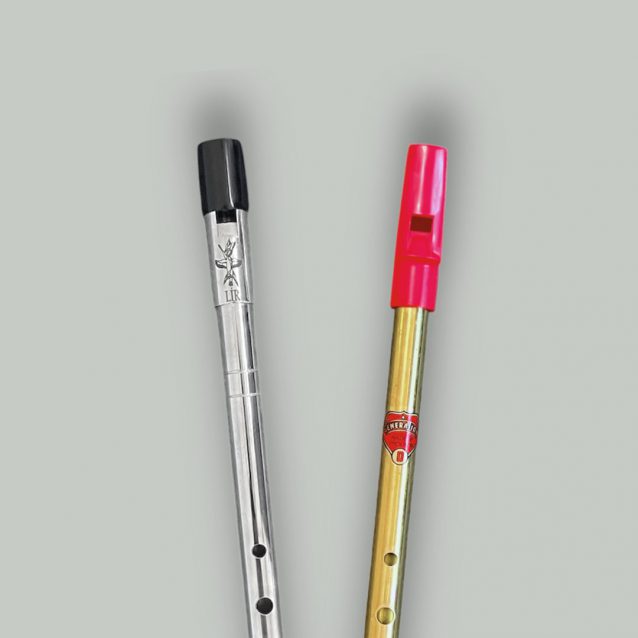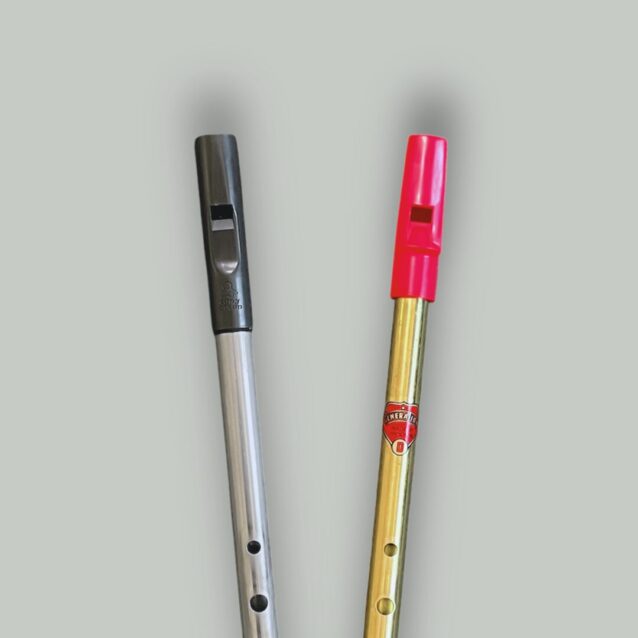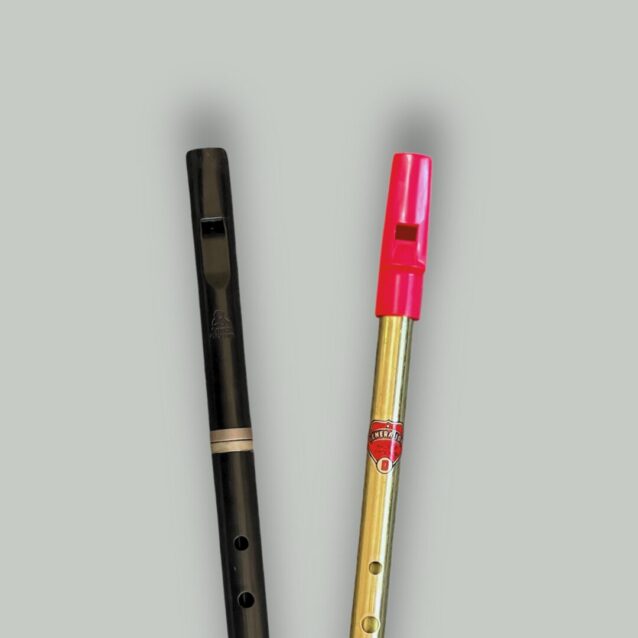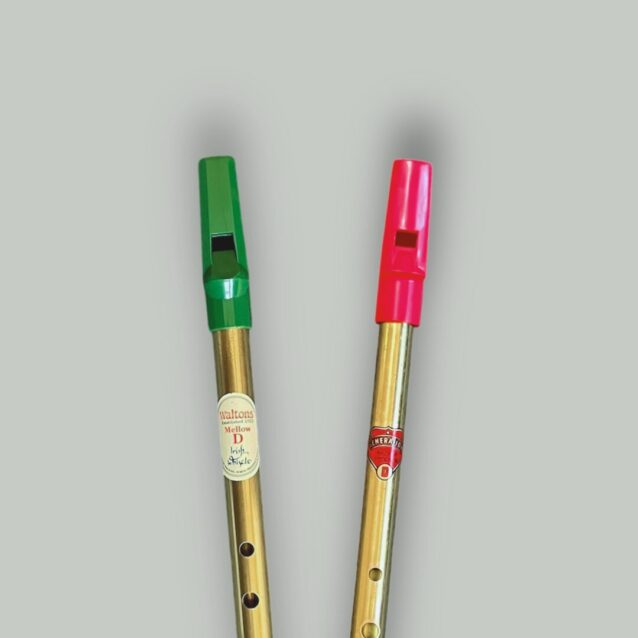Generation is one of the most iconic names in the world of tin whistles. Based in Shropshire, UK, Generation Music has been producing whistles since the 1960s. In this review, we’ll take a closer look at their classic Brass D model — a whistle that’s been a first step into traditional music for countless players over the decades.
Design & build
| Model: | Generation |
|---|---|
| Key: | D (high/soprano) |
| Material: | Brass |
| Mouthpiece: | Plastic |
| Windway type: | Straight |
| Length: | 294mm (11.57″) |
| Weight: | 33g (1.16oz) |
| Bore diameter: | 12mm (~ 0.47″ or 15/32″) |
| Tuneable: | Not by default (but the head can be loosened with hot water) |
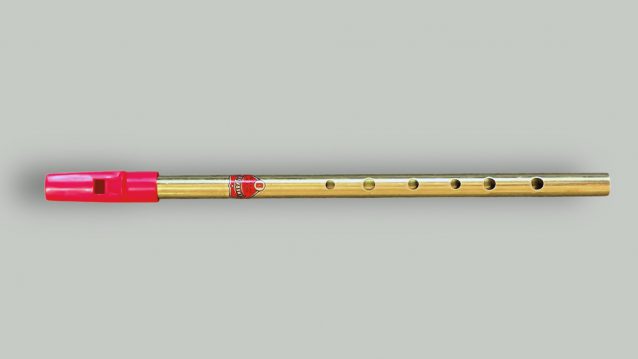
It’s hard to say whether Generation was the very first brand to use this look, but their whistles have certainly defined the classic, instantly recognizable tin whistle design. The model we’re reviewing here features a red plastic mouthpiece and a polished brass tube — probably the first image that comes to mind for many when they think of a tin whistle.
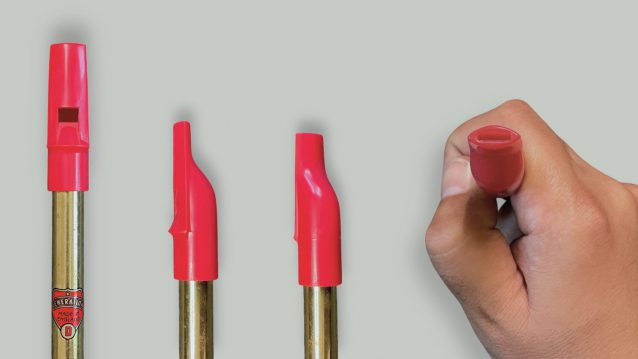
The mouthpiece has a straight-opening windway and is glued to the brass body by default. However, it can be removed by placing the head in hot water (or briefly in boiling water), which allows you to adjust tuning via the joint.
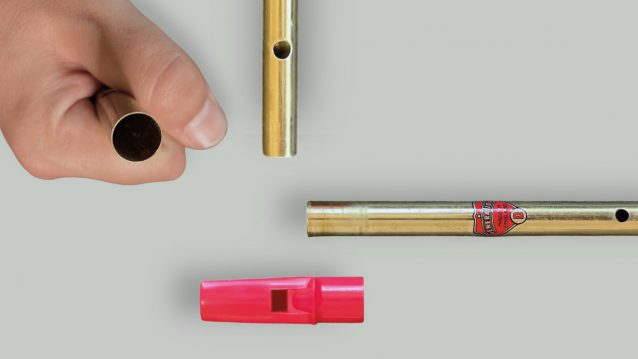
The bore diameter is the standard narrow type, made from thin brass tubing. Like all whistles made from raw brass, it will naturally oxidize over time and develop stains or tarnish. This is completely normal, and you can always polish it occasionally if you’d like to maintain its shiny appearance.
Generation – Sound samples and demonstration
The video below features samples from both octaves, starting with slower melodic phrases and then moving into faster tunes to show how the Generation whistle responds in different playing contexts.
As you can hear in the recording, the Generation whistle delivers that instantly recognizable chiffy sound associated with traditional Irish playing. In the upper octave, especially on higher notes, the tone can sometimes get close to breaking up — which is part of its character. Still, the overall tone remains fairly consistent across both octaves, and that airy edge comes through whether you’re playing slow ballads or faster dance tunes.
Ornamentation cuts through clearly, with a sharp and direct response that matches the whistle’s bright tone.
Tuning is generally solid, though the C natural doesn’t quite land in tune with the standard “OXX OOO” fingering. The alternative “OXX XOX” tends to work better in this case.
How it handles from a player’s perspective
The Generation whistle is primarily designed as an entry point into the world of tin whistles — perfect for learning the basics. As with most entry-level instruments, it’s an easy blower, which means it doesn’t take much air to get a sound. However, that also comes with a trade-off: the tone, especially in the higher notes of the upper octave, can be tricky to control. It’s quite easy to overblow and get squeaky or unstable notes.
More experienced players often manage to control this and get excellent results — especially if they enjoy that chiff-heavy trad character. But beginners may find it frustrating at times due to the frequent squeaks. In that sense, this can definitely be your first whistle, but once you’ve learned the basics, it’s absolutely worth upgrading to a better (and yes, more expensive) whistle that’s easier to control and more consistent overall.
Since it’s often compared to the Feadóg, a quick note on that: the Generation tends to offer slightly more tonal consistency between octaves. Feadóg usually has a clearer tone in the lower octave and becomes more airy in the upper, while the Generation carries that breathiness in the lower octave as well.
That said, keep in mind this is a mass-produced whistle that hasn’t undergone thorough testing. Small imperfections in the plastic head can vary from one unit to another. So if you’re buying in person, it’s worth trying a few and picking the one that plays best. And if you’re ordering online, it might be a good idea to get at least two — it won’t break the bank, and you’ll have a backup or a better-performing option to choose from.
Your thoughts?
Have any questions or impressions about the Generation whistle? Feel free to drop a comment under the Generation tin whistle review video on YouTube. We check in regularly and are always happy to chat, answer questions, or hear your experience with the whistle!
Generation whistle comparisons
Below are a few quick sound comparisons between the Generation Brass D and other tin whistles. Each clip is recorded using the same microphone and settings to give a fair impression of tone and character, with raw, unprocessed sound.
View more Generation comparisons
Please note: due to YouTube’s automatic audio normalization, real volume differences between whistles are effectively removed. That’s actually helpful in this case — since louder sounds are often perceived as better to the human ear on a subconscious level, this allows you to focus more objectively on tone, texture, and response.
Where to buy this whistle
If you’re interested in picking up this whistle, here are a few trusted places where you can find it. Prices typically range around $10, depending on the shop, region, and packaging type.
- Amazon
- BigWhistle (UK, ships worldwide)
- Generation Music (UK, ships worldwide)
- Hobgoblin (UK, ships worldwide)
- McNeela Music (Ireland, ships worldwide)

